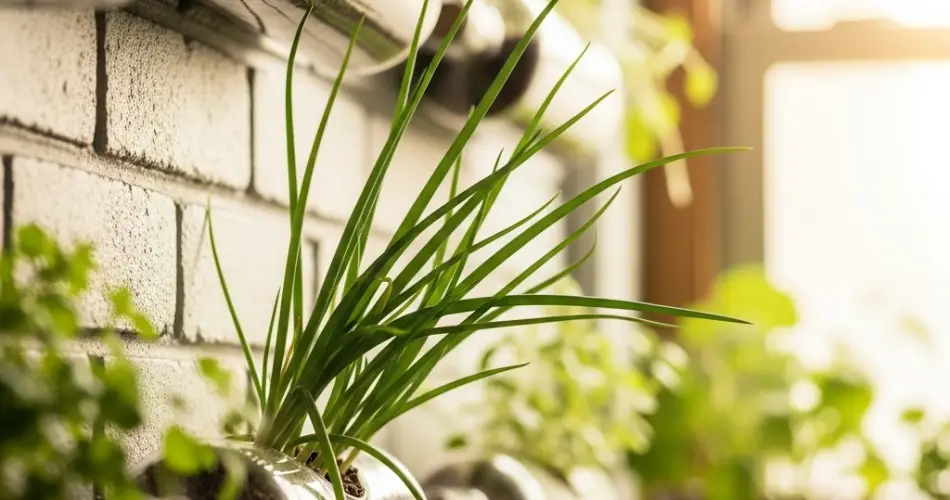Scallions, also known as green onions or spring onions, are among the easiest vegetables to grow at home. Their compact root system, rapid growth, and versatility in the kitchen make them ideal candidates for container and vertical gardening. If you have limited space, you can still enjoy a steady supply of fresh scallions by growing them in plastic bottles mounted on a wall.
This simple method not only saves space but also upcycles plastic waste, turning it into a productive vertical garden. Whether you live in an apartment or want to make the most of your balcony or backyard wall, bottle gardening is an efficient way to harvest scallions all year round.
Why Grow Scallions in Plastic Bottles?
Scallions are low-maintenance, quick to grow, and don’t require deep soil. They thrive in small containers and grow well vertically. Using plastic bottles allows you to:
-
Repurpose household waste sustainably.
-
Maximize space on walls, fences, or balcony railings.
-
Maintain an easy-care crop within arm’s reach.
-
Create a vertical garden that is attractive and functional.
With consistent watering and sunlight, scallions can be harvested multiple times from the same plants, making them a perfect crop for continuous harvest.
What You’ll Need
To build your vertical scallion garden, gather the following items:
-
Clean 1.5–2-liter plastic bottles (with labels removed)
-
Sharp knife or scissors
-
Heated nail, screwdriver, or drill (for drainage holes)
-
Potting mix rich in compost
-
Scallion bulbs, kitchen scraps, or seeds
-
Wire, twine, or zip ties for mounting
-
Support frame (optional: wooden pallet, wire mesh, fence, or wall hooks)
Optional:
-
Liquid organic fertilizer
-
Coconut coir or rice hulls for moisture control
Preparing the Bottles
-
Cut an opening along the side of the bottle to create a planting pocket. A rectangle about 3–4 inches wide and 5 inches long works well.
-
Poke drainage holes at the bottom of each bottle to prevent waterlogging.
-
Create mounting holes near the top and bottom edges so you can secure the bottles with wire or ties.
For added visual appeal or root protection, paint the bottles or cover them with cloth, mesh, or jute sacks to block excess sunlight.
Planting Methods
You can grow scallions from seeds, store-bought bulbs, or scraps. Here’s how to plant each type:
-
From Seeds: Fill the bottle with potting mix, sprinkle seeds evenly, and cover with a thin layer of soil. Water lightly. Germination takes 7–14 days.
-
From Bulbs: Buy small sets of scallion bulbs or use trimmed bulbs from the grocery store. Plant them root-down about 1 inch deep, spacing them 1–2 inches apart.
-
From Scraps: Use the white root ends of store-bought scallions. Place them in water until new growth appears, then transplant into soil-filled bottles.
Place the bottles in a sunny location—scallions need at least 4–6 hours of light daily to thrive.
Mounting the Bottles
Secure each bottle to a sturdy vertical surface using twine, zip ties, or wire. Space the bottles 6–8 inches apart to ensure good airflow and access to light. You can also stagger the bottles in a diagonal pattern for better aesthetics and drainage flow.
Consider mounting them on a wall that gets morning sunlight and is sheltered from heavy rains.
Watering and Care
Scallions prefer evenly moist soil but do not tolerate soggy roots. Water when the top inch of soil feels dry. In hot climates, you may need to water daily, especially for wall gardens exposed to full sun.
Fertilize every 2–3 weeks with diluted organic fertilizer or compost tea to encourage lush green growth.
Harvesting
Scallions can be harvested when they are about 6–8 inches tall, usually 30–45 days after planting. Use scissors to cut the leaves above the soil level or pull the entire plant, depending on your needs.
For a continuous harvest:
-
Cut only the green tops and leave the white base in place to regrow.
-
Harvest from alternate bottles to avoid stressing the plants.
Well-cared-for scallions can regenerate up to 4 or 5 times from a single planting.
Pest and Disease Management
Wall gardens are generally less prone to pests, but you should still monitor for common problems:
-
Aphids: Remove with a strong spray of water or apply neem oil.
-
Fungal diseases: Ensure good drainage and avoid overhead watering.
-
Root rot: Prevent by using well-draining soil and maintaining proper watering schedules.
Rotate crops seasonally and clean bottles between plantings to keep your wall garden healthy.
Final Tips for Success
-
Group bottles by maturity so you can harvest and replant in a cycle.
-
Add mulch (like coconut coir or straw) to retain moisture and reduce evaporation.
-
Grow companion herbs like basil, parsley, or thyme on the same wall for a diverse and useful mini garden.
-
Use greywater wisely by capturing water from rinsing vegetables or dishes (without soap) to hydrate your scallions.
Conclusion
Growing scallions in wall-mounted plastic bottles is a practical and eco-friendly gardening method. It transforms unused wall space into a productive food source and gives you year-round access to fresh green onions. Whether you’re an urban gardener, a sustainability enthusiast, or simply someone who enjoys fresh ingredients, this technique allows you to enjoy a continuous harvest without the need for a traditional garden bed.



